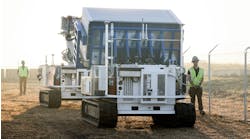It’s interesting to see how commercial building design has shifted over the years to a more holistic approach focused on the needs of the building occupants and device connectivity. The new approach leverages IT-type systems on many fronts, uses open source protocols and platforms rather than propriety ones, and harvests and processes as much data as possible. The design goal now is to integrate and optimize everything on a life-cycle basis.
If you stop and think about it for a moment, a typical large office building relies on a number of subsystems to keep its occupants comfortable and safe. On the safety and security front, there are mass notification, access control, video surveillance, and fire detection systems. In the area of environmental control, there are HVAC and natural ventilation systems — and possibly even shade/blind control systems. A plumbing system delivers fresh, clean water for drinking and hygiene as well as removes wastewater from the building. An electrical system distributes power throughout the building, of course, and normal and emergency lighting systems illuminate the space. Let’s not forget the all-important IT, audio/visual, and telephony systems that drive the business enterprise of the companies operating in the space.
Smart buildings use information technology during operation to connect these various subsystems so they can share information and optimize total building performance. According to the Institute for Building Efficiency, a smart building can save money through:
• Optimized cooling and ventilation equipment.
• Matching occupancy patterns to energy use.
• Proactive maintenance of equipment (analysis algorithms detect problems in performance before they cause expensive outages).
• Dynamic power consumption (by taking signals from the electricity market and altering usage in response, a smart building ensures the lowest possible energy costs and often generates revenue by selling load reductions back to the grid).
As you can see, there are a many benefits to be had by the entire project team (architects, engineers, building owners, facility managers, contractors, and product vendors) when pursuing the vision for a new intelligent, high-performance building. But what about the enormous number of “dumb” buildings sitting out there, waiting for someone to come along and teach them some new operational techniques? This is where the real challenge lies.
Trying to turn a dumb building into a smart one is no easy task. But I feel it’s one worth pursuing, which is why I asked our long-time freelance writer Tom Zind to pull together a cover story for us this month on this topic. His story, “Get Smart,” starting on page 18, does a great job of presenting the human factors and technical challenges associated with this quest to drive intelligence levels higher in a massive number of existing older buildings across the United States. It also raises the point that if older, inefficient buildings want to maintain their value in the new high-performance building market, then they’ll have to invest in new upgraded systems — and this is a market segment you should be pursuing.




